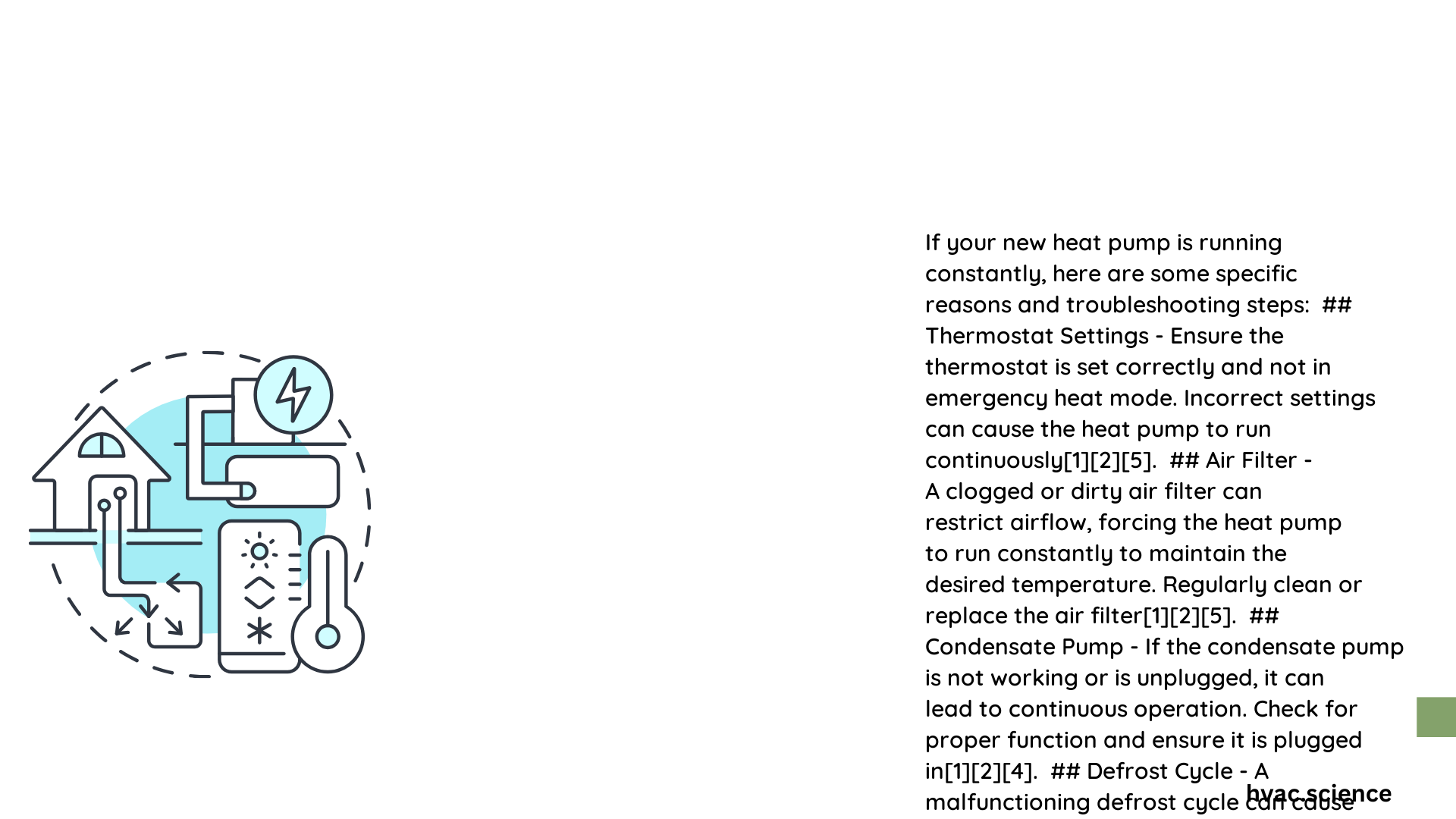A new heat pump running constantly can signal underlying performance issues, potentially indicating incorrect installation, thermostat misconfiguration, or system design problems. Continuous operation not only increases energy consumption but may also suggest inefficiencies that require immediate professional assessment. Understanding the root causes and implementing strategic diagnostics can help restore your heat pump’s optimal functionality and prevent long-term system damage.
Why Does a New Heat Pump Run Non-Stop?
Potential Causes of Continuous Operation
Heat pumps are designed to cycle on and off to maintain consistent temperatures. When a new heat pump runs constantly, several critical factors might be responsible:
Thermostat Configuration Problems
- Incorrect temperature settings
- Miscalibrated sensor readings
- Incompatible system programming
System Sizing Challenges
| Sizing Factor | Impact on Performance |
|---|---|
| Undersized Unit | Constant Running |
| Oversized Unit | Frequent Short Cycling |
| Perfectly Sized | Optimal Performance |
Diagnostic Approach for Continuous Operation
Initial Troubleshooting Steps
- Verify thermostat settings
- Check temperature differential
- Inspect outdoor unit functionality
- Assess airflow restrictions
Performance Metrics to Consider
Energy Consumption Analysis
- Average heat pump cycle: 10-15 minutes
- Continuous operation increases energy consumption by 200-300%
- Potential daily cost increase: $5-$15
Technical Evaluation Techniques
Comprehensive System Assessment
- Refrigerant pressure measurement
- Electrical component testing
- Airflow volume calculation
- Thermal efficiency evaluation
Potential Resolution Strategies
Professional Intervention Requirements
- Certified HVAC technician consultation
- Comprehensive system diagnostic
- Potential component replacement
- Recalibration of system parameters
Cost and Efficiency Implications
Financial Considerations
- Increased electricity expenses
- Potential system wear and tear
- Long-term performance degradation
Preventative Maintenance Recommendations
Regular System Check Protocols
- Monthly air filter inspection
- Quarterly external unit cleaning
- Annual professional maintenance
- Continuous performance monitoring
Technical Specifications Evaluation
Heat Pump Performance Indicators
- Coefficient of Performance (COP)
- Seasonal Energy Efficiency Ratio (SEER)
- Temperature differential capabilities
- Refrigerant type and charge
Advanced Diagnostic Techniques
Specialized Testing Methods
- Infrared thermal imaging
- Electrical resistance measurement
- Refrigerant flow analysis
- Compressor efficiency testing
Manufacturer Warranty Considerations
Warranty Protection Strategies
- Document all performance issues
- Maintain detailed maintenance records
- Follow manufacturer recommended protocols
- Preserve original installation documentation
Expert Recommendations
Professional Insights
- Do not ignore continuous operation
- Schedule immediate professional assessment
- Avoid DIY complex repairs
- Prioritize system efficiency
Conclusion
Understanding why a new heat pump runs constantly requires systematic investigation, technical expertise, and proactive maintenance. By implementing comprehensive diagnostic strategies and seeking professional guidance, homeowners can ensure optimal system performance and energy efficiency.

